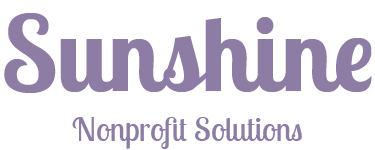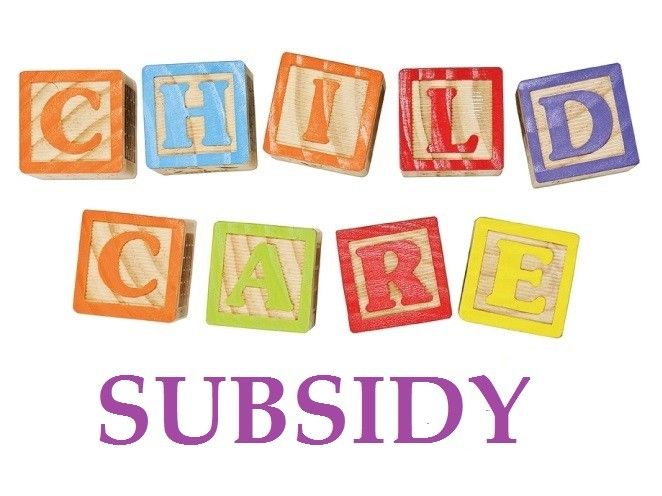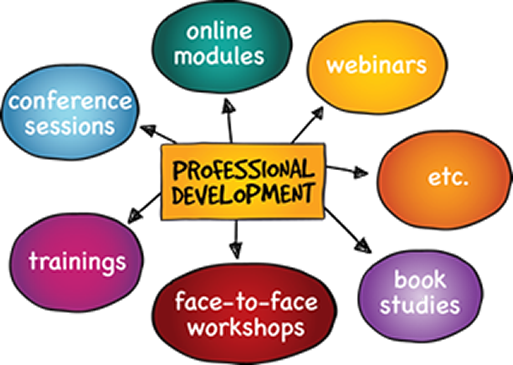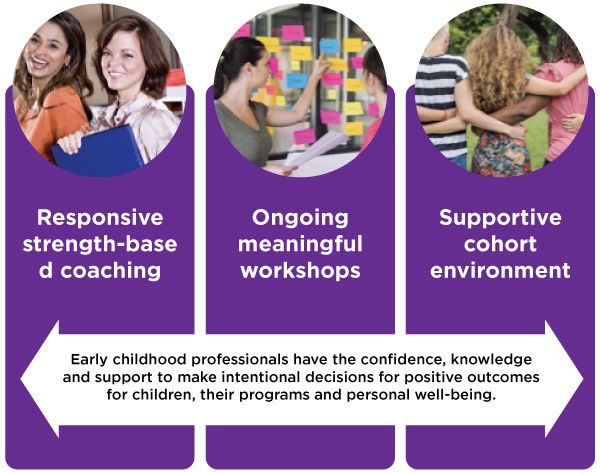The Early Head Start−Child Care Partnership (EHS−CCP) initiative brings together the best of Early Head Start and childcare through layering funding to provide comprehensive and continuous services to low-income infants, toddlers, and their families. EHS−CCP programs enhance developmental services and support for low-income infants, toddlers, and their families by providing strong relationship-based experiences and preparing them for the transition into Head Start and preschool.

Three Layers for Planning Your New Early Head-Start Childcare Partnership Grant
Cathleen Armstead, Ph.D.
The Early Head Start−Child Care Partnership (EHS−CCP) initiative brings together the best of Early Head Start and childcare through layering funding to provide comprehensive and continuous services to low-income infants, toddlers, and their families. EHS−CCP programs enhance developmental services and support for low-income infants, toddlers, and their families by providing strong relationship-based experiences and preparing them for the transition into Head Start and preschool.

The long-term outcomes of the EHS-CCP program are beneficial for the entire community and include:
- A more highly educated and fully qualified workforce to provide high-quality infant/toddler care and education.
- Increased community supply of high-quality early learning environments and infant/toddler care and education.
- Well-aligned early childhood policies, regulations, resources, and quality improvement support at the national, state, and local levels.
- Improved family and child well-being and progress toward school readiness.

Benefits and Building Blocks
Early Head Start provides comprehensive family-centered services within high-quality early learning environments that adhere to research-based Head Start Program Performance Standards. Integrating Early Head Start comprehensive services and resources into the array of traditional childcare and family childcare settings creates new opportunities to improve outcomes for infants, toddlers, and their families.
Together, all children in classrooms with EHS−CCP enrolled children benefit from low teacher-to-child ratios and class sizes, qualified teachers receiving ongoing supervision and coaching to support the implementation of curriculum and responsive caregiving, and broad-scale parent engagement activities. Infants and toddlers attending an EHS−CCP site benefit from facilities and homes that are licensed and meet safety requirements.
Now is the Time to Plan
Early Head Start—Childcare Partnership grants are expected to be announced late summer or early fall. Now is the perfect time to start planning, whether you are an existing partnership grantee or new to the process.

Sunshine Nonprofit Solutions has been instrumental in writing successful grant proposals for each of the previous funding cycles and has provided implementation planning services. With each funding cycle and implementation process, we have learned more and can ensure a seamless grant process.
The Cost-Estimation Tool
The Early Head Start−Childcare Partnership grant is a special and unique opportunity to expand Early Head Start to more infants, toddlers, and twos with their families and to enhance the quality of early childcare within the community. The EHS−CCP model combines Early Head Start services, regulations, and funding with existing private early childcare centers or family-based childcare homes. Combining the resources of Early Head Start with the state subsidies expands the number of early childhood spaces for infants, toddlers, twos, and their families. With the implementation of Early Head Start resources and regulations, all early childhood care in a community is elevated; this is accomplished through several thorough planning tools.
The Cost Estimation Tool for Early Head Start-Child Care Partnership Services is invaluable as you progress toward the goal of a working partnership.
The EHS−CCP program rests on a layered foundation of services and funding. The first layer is core childcare services; Layer 2 comprises program-level enhancements to support comprehensive services—benefits accrue to all children; and the third layer provides for EHS comprehensive services to those children enrolled in the EHS−CCP program and can be used to locate and expand funding for children not enrolled in the EHS−CCP.
The Cost-Estimation Tool is critical to the success of your program, and it provides a way of determining costs, negotiating responsibilities, and ensuring equitable funding to provide enhanced services to infants, toddlers, twos, expectant women, and their families.

The best way to use the tool is in conjunction with an implementation planner. Each partner or group of similar partners works through the questions of the tool, determining existing resources and highlighting areas to develop. An implementation planner guides childcare partners in addressing their resources AND needs. The implementation planner can identify assets, explore blind spots, and assist with negotiating difficult decisions.
The implementation planner conducts this same exercise with the partnership grantee. This tool is useful for determining the feasibility of new partners; it is just as useful in assessing existing family childcare or center-based partners to ensure that costs are equitable, and services are appropriate.
After the partnership grantee and each childcare partner have thoroughly reviewed the cost allocation tool, the implementation planner facilitates a strategic meeting where questions from the tool are answered, and further questions are developed. Shortly thereafter, the implementation planner guides the second strategic planning session with answers finalized and a contractual agreement drafted.

Layer One: Core Services
The first layer, or core services, includes all the services currently provided, including classroom instruction, mental health classroom observations, nutrition information, and reimbursement from the U.S.D.A. Child and Adult Care Food Program (CACFP). Other services might include developmental screenings, child outcome assessments, and parent−teacher conferences.
Staffing, including appropriate teacher/child ratios (1:4) and a maximum group size of eight, are important core services, as are the number of hours and weeks the center or family childcare home is available and accessible to children and families. It is helpful to determine the core childcare services provided by existing childcare partners. (Is there a curriculum? Is food supplied and reimbursed through the CAFCP)? Are there home visits and parent−teacher conferences? Are children screened for their development level or assessed in their learning?
The Cost Estimation Tool provides guidelines for determining how much staffing costs will increase and what types of costs to expect with decreased teacher/child ratios and decreased group sizes. In many cases, the costs associated with a reduction in enrollment are more than offset by resources from the EHS−CCP funding.

State Subsidies
An essential aspect of core foundational services is the availability and accessibility of childcare subsidies through the state. Eligibility requirements and structure of payments vary by state, although rules and eligibility requirements are structured by federal guidelines. Nonetheless, there are regional and local variations. I cannot emphasize this enough: use your connections and network to find the most knowledgeable person in the state agency. Success with this model relies heavily on obtaining state subsidies. One strategy that works well is to hire one or two individuals solely responsible for assisting parents with the entire process and enabling the collection and allocation of appropriate subsidies.

Level 2 enhancements emphasize professional development. EHS has a structured approach to training, which includes an orientation, pre- and in-service trainings, and structured higher education courses leading to degrees or credentials. Try to establish a partnership with your local community college to offer college credit for the Child Development Associate Credential, which will translate into higher degrees (Associate in Science and then a bachelor’s).
The cost-allocation tool helps the partnership grantee, and the childcare partners define existing costs, additional costs, and necessary resources. Again, the cost-allocation tool, when completed by each partner, is invaluable, and an investment in an implementation planner is well worth the cost.
Salary enhancements are an important part of Level 2 improvements. EHS−CCP programs are strongly encouraged to offer competitive salaries with incentives to improve credentials. The EHS-CCP grant does allow a one-time salary differential to bring early childcare partnership salaries in line with Early Head Start wages.
There is a high turnover among teachers in the early childhood industry. Part of the turnover is linked to wages; another important aspect is a lack of access to resources to do their job. Increasing salaries and providing resources amounting to four hours per week outside the classroom is a means of enhancing employee engagement and reducing turnover.

Professional Development: Coaching
Coaching is necessary for improving classroom practices, especially teacher/child interactions. It is also considered by teachers to be an additional resource for doing their job—encouraging teacher satisfaction and retention. The most effective way to quickly improve teacher/child interactions is to invest in the coaches. Including the costs for the direct, face-to-face professional development of coaches coupled with supplemental online training is well worth the cost. Again, the cost estimation tool is helpful for determining the costs for a comprehensive professional development program for coaching. Sunshine Nonprofit Solutions is helpful in structuring what is needed, outlining potential costs, and providing access to a wide array of additional resources—including skilled trainers and coaches.
The final costs associated with Layer 2 are the additional materials and supplies. Plan for screening, curriculum, and assessment materials, both as an initial cost and on-going operating expenses.

Planning Your Space
Many programs use start-up funds to purchase equipment and materials without a structured plan. For EHS classrooms, the emphasis is soft and soothing colors, the reduction of noise, and classrooms divided by function (e.g., quiet play, mirrored spaces, book nooks, safety pull up bars). Spaces for Children offers training and consulting services to maximize space requirements and provide developmentally appropriate environments. Furthermore, Spaces for Children works with outdoor spaces to provide an extension of the classroom.
Playground equipment, scanners, classroom camera systems, tablets for teachers, and enrollment data management systems might be necessary additions to the program. For tablets and the data management system, factor in training costs. Minor facility improvements that do not exceed $250,000 or require a structural change are also included in start-up costs and include painting, signage, upgrading air conditioning systems, and additional cleaning and sanitizing equipment. Many programs do not adequately account for minor renovations and repairs—an experienced implementation planner will ensure all costs are accounted for and listed in the Cost Estimation Tool.
The Cost Estimation Tool is invaluable, as it provides a “gap” analysis comparing what exists with what needs to be implemented. Additionally, all possible costs are included—a thorough review of the tool with the assistance of an implementation planner will provide guidance in writing a successful proposal and enable the seamless implementation of this special program.
Layer Three: Services for Individual Children
Layer 3: costs associated with individual children and comprehensive services provided by Early Head Start funds. Funds from the Early Head Start-Child Care Partnership program only fund those children enrolled in the EHS−CCP process. This layer of funding includes home visits, family support services, and supplies (e.g., dental hygiene, diapers, wipes, changing table paper, food, and formula services). Typically, only children enrolled in the EHS−CCP program are allotted funds for these services.
In the day-to-day classrooms, some children will be enrolled in EHS−CCP (and offered the full gamut of services), while others will only be eligible for the state subsidy. Still others will be privately funded without access to the comprehensive services necessary for children and families to realize their full potential.

Negotiations and discussions centered on Layer 3 expenses reduce the potential for misunderstanding, resentment—especially from parents—and cost allocation mistakes. First and foremost, the Cost Estimation Tool is used to outline, define, and delineate all necessary expenses. Then, together, the grantee partner and the partnering childcare providers work to secure external funding for their partnership program. Some suggestions for external funding include working with a local university to support graduate-level psychology or social work interns to work with families or children to promote pro-social behavior; working with the local community for diaper drives and for family work or working with children to develop; and partnering with a local chapter of the American Pediatric Association for oral exams. There are also external grant funding opportunities, as our community has become more aware of the need for high-quality care for children in the first 1,300 days of their lives.

If you would like to explore the costs and benefits of an EHS-CCP grant you or you are interested in an overview of the planning process you can schedule a free consultation with Sunshine Nonprofit Solutions.
